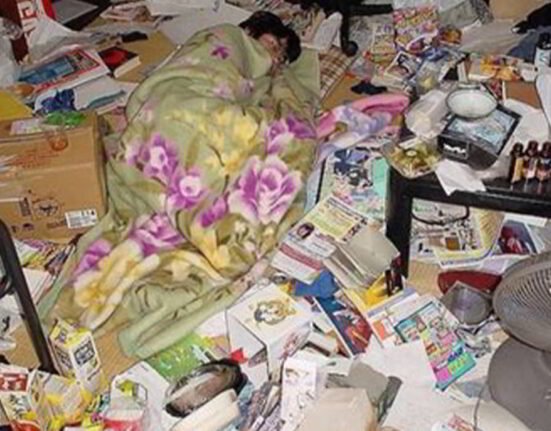During a three-hour-long procedure, doctors removed many objects from the stomach of a 40-year-old man from Moga, Punjab, including headphones, bolts, nuts, washers, a lock, and keys. Medicality Director Dr Ajmer Kalra said, “This was the first occurrence for them in their professional lives, but the doctor successfully removed everything. He added that the patient’s health was not yet stable because the things had been in the stomach for a considerable amount of time.”
According to sources, the individual had been experiencing stomach pain for the previous two years. He went to the Medical City Hospital in Moga and complained of vomiting, fever, and excruciating stomach discomfort. Doctors discovered many objects in his stomach during X-ray scans.
In a statement from the patient’s family, “He had been having significant stomach difficulties for two and a half days, but he rarely addressed it, making it difficult for us to understand the situation. But we went to the physicians when the symptoms worsened and he was unable to even sleep. The family members also stated that they had no idea as to how he was able to consume all of the objects. They also mentioned that their son had mental health problems too.”
This kind of long-term, compulsive craving for non-food products or substances with little nutritional value can potentially be associated with the mental illness known as Pica.
Pica & Its Symptoms:
A person with a pica eating disorder obsessively consumes things that aren’t food and have no nutritional value. Pica can be typical, expected, and safe depending on when and why it happens. A person with this condition risks serious repercussions if they consume something harmful or dangerous. People who have this illness struggle mightily to suppress the impulse on their own since it is compulsive.
The most widespread varieties of Pica include;
- Geophagia: It is the consumption of the earth, including eating sand, mud, clay, and dirt.
- Pagophagia: It is a condition where persons with iron deficiency anaemia consume ice, freezer frost, or icy beverages compulsively.
- Amylophagia: The desire for starches like cornflour, laundry starch, or uncooked rice or pasta.
Other than this people with Pica are also likely to consume; charcoal, hair, ashes, paint chips, paper, plastic, metal, pebbles, soap etc.
Pica signs and symptoms include;
- Anaemia (deficiency of iron).
- Ascariasis (infection with roundworms).
- Constipation.
- Electrolyte imbalance.
- Arrhythmias, or abnormal cardiac rhythms.
- Poisoning by lead.
- Obstruction/blockage of the small intestine and the large intestine.
Causes of Pica:
- Nutritional deficiencies (such as a lack of iron or zinc) and undernutrition.
- Developmental diseases like autism spectrum disorder and intellectual disabilities.
- Obsessive-compulsive disorder (OCD) and schizophrenia are examples of mental health illnesses.
- Anaemia due to cause by iron deficiency.
- Stress, especially in children who have experienced abuse, neglect, or poverty.
- Pregnancy, especially in women who may be anaemic or iron-deficient.
- Cultural customs and traditions, especially in regions where it’s socially acceptable to consume non-food materials like clay, soil, and other things.
- The presence of symptoms like trichotillomania (hair pulling) or excoriation (skin picking), can also make a person more susceptible to developing pica.
Diagnosis of Pica:
- Consuming non-food products continuously for at least a month or more.
- Consumption of non-food items when it is not motivated by social or cultural norms that support the behaviour.
- Eating habits that are not appropriate for development.
Tests to assess Pica include;
- Blood Tests: Look for underlying medical disorders such as anaemia or lead poisoning as well as nutritional inadequacies.
- Imaging Procedures: X-rays and other imaging procedures can look for indications of an intestinal obstruction.
- Stool Examinations: Looks for a parasite infection.
- Psychological Evaluation: Determines whether any underlying mental health conditions, such as OCD, may be contributing to the behavior.
Treatment for Pica:
- Mild Aversive Therapy: Using mild aversions (consequences) to train people to avoid non-food things and positively reinforcing (rewarding) healthy eating behaviours are two aspects of this strategy for teaching people to avoid pica behaviours.
- Behavioural Therapy: This form of therapy entails educating a patient about coping skills and behaviour modification techniques.
- Differential Training: By concentrating on other behaviours and activities, people can learn to avoid pica behaviours with this technique.
- Medications: Antibiotics or antiparasitic drugs to treat bacterial or parasitic infections. Lack of nutrients can be addressed with nutritional supplements and counselling.
Pica can be dangerous and even fatal because consuming non-food objects increases the risk of developing major illnesses such as intestinal obstructions, poisoning, and infections. As a result, it’s critical to get medical assistance.
Behavioural therapy, dietary counselling, psychotherapy, and addressing any underlying medical conditions are common treatment modalities for pica. The individual’s age, the severity of the condition, and the underlying causes will all affect the therapy strategy.
It is essential to speak with a healthcare professional for an accurate assessment and advice on how to manage this disease. People with pica can overcome their cravings and lower the related health risks with early intervention and proper assistance.













Leave feedback about this